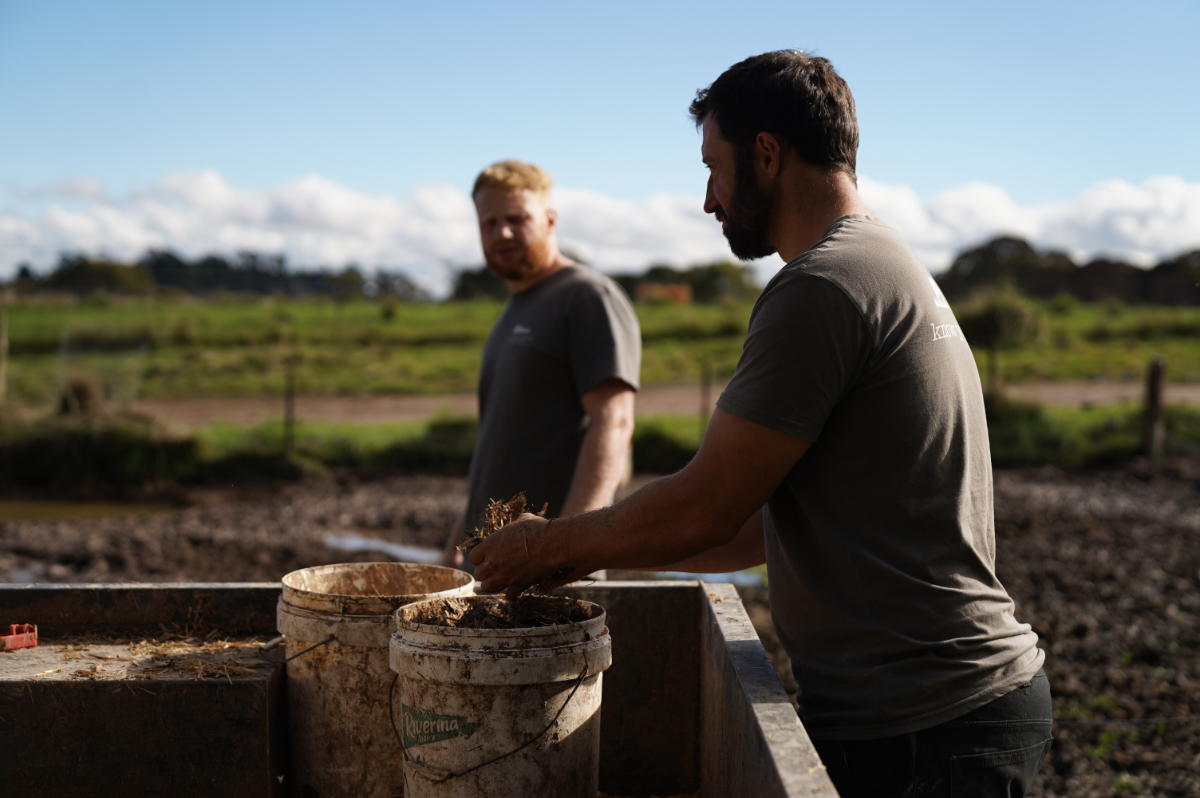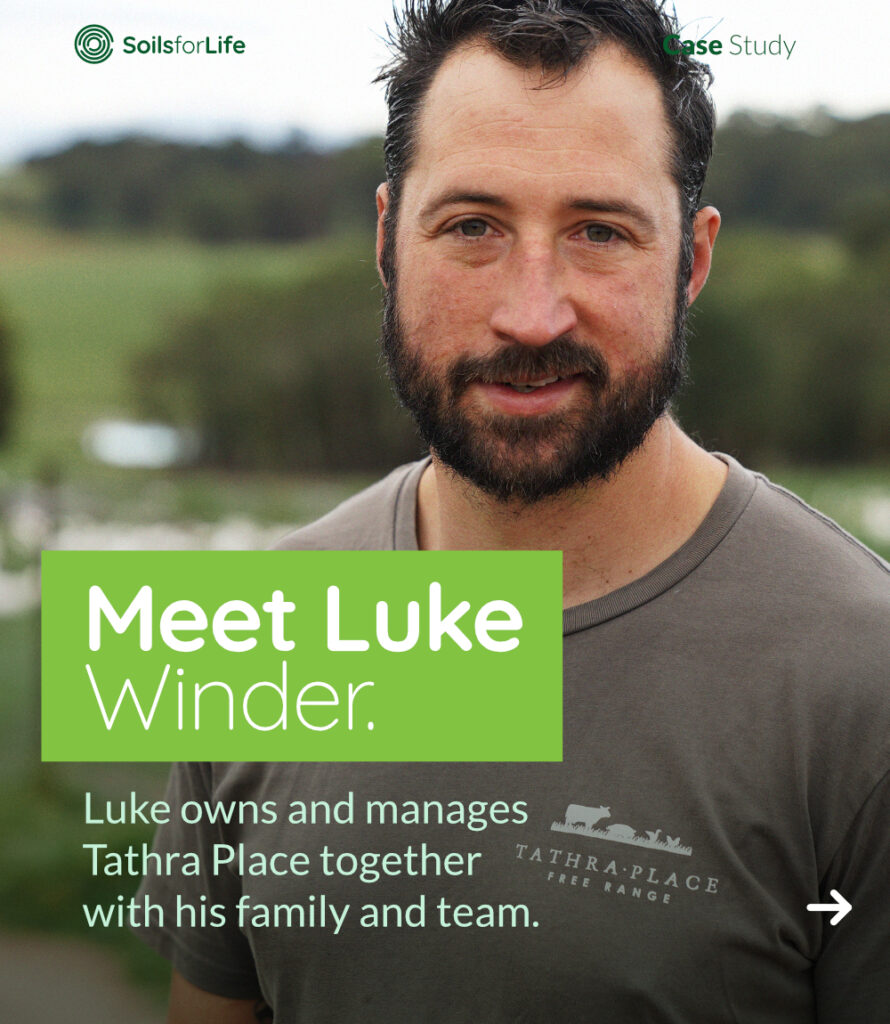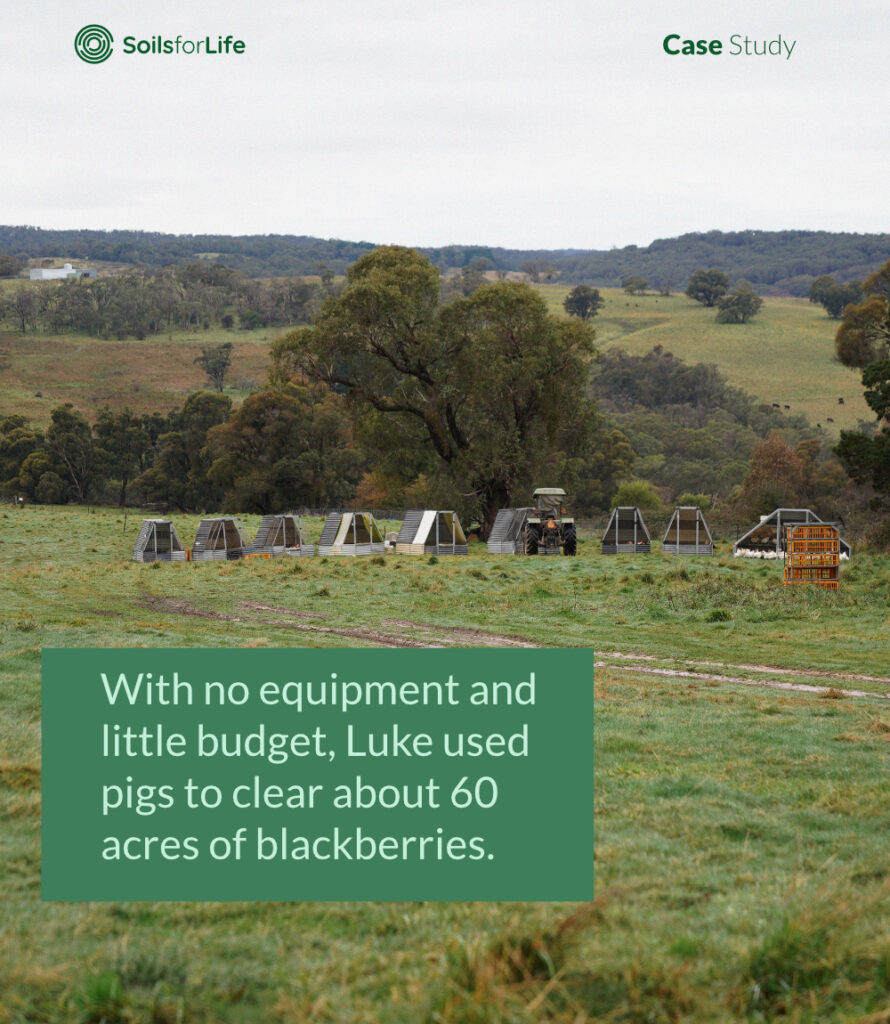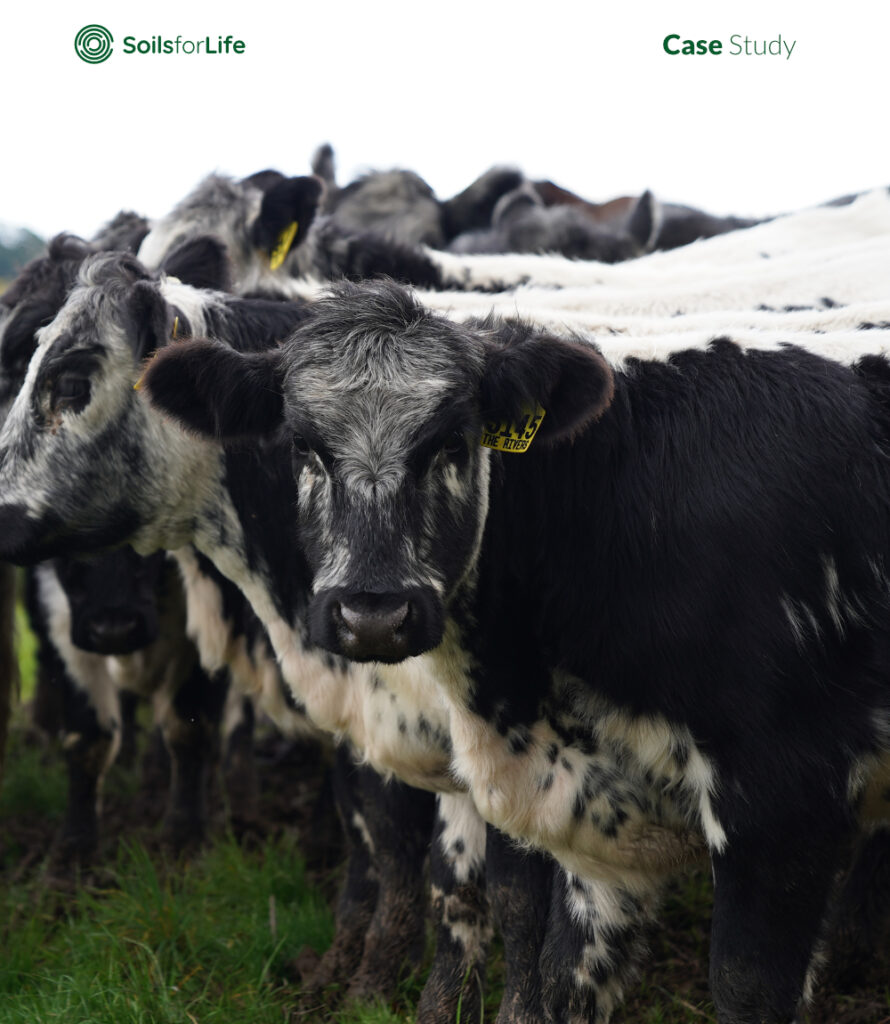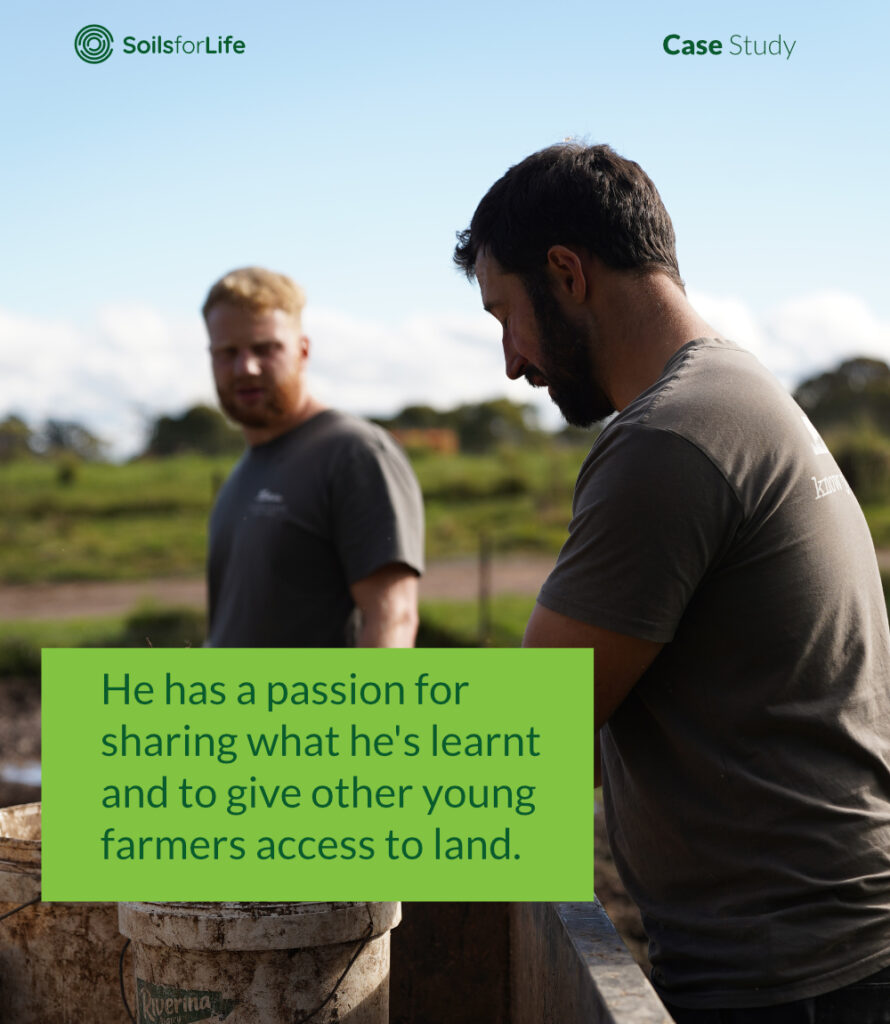New and Young Farmers – Part One
Overcoming challenges in getting started
Recent research undertaken by The Farmer Incubator in partnership with Young Farmers Connect highlights how access is one of the main challenges for the next generation of farmers. Right at the beginning of the process, new and young farmers can be hindered by both access to land and access to capital. Land purchasing and leasing prices are often cost-prohibitive, and sometimes even when one’s parents are farming, it is challenging to access family land.
Another challenge is access to learning pathways. Many of the traditional education programs do not have a strong focus on soil biology, or practices to improve soil health. Young and new farmers also may struggle to find support, such as in social networks, or dedicated funding. In addition, similar to all farmers, new and young farmers face the increasing climatic challenges.
To provide guidance in over-coming these challenges, our next set of case studies share the stories of four families who are new to farming or are young farmers. Within these stories, farmers share not only on how they farm for soil health, but how they overcome the challenges unique to them.
In this blog we offer emerging insights from the case studies in relation to the first two challenges of access to land and access to capital.
How are new or young farmers getting started with little capital?
Some of our case study farmers experimented on their parents’ land integrating new species, such as chickens and pigs, into cattle grazing enterprises. They share the benefits they observe of having chickens following the cattle. The cows shorten the grass for the chickens, and leave dung for them to forage in. The chickens then pasteurising their dung (by eating the fly larvae), to create less of a fly burden for the cattle.
As one of our case study participants, Harriet Finlayson said:
The next experiment is to bring the chickens into paddocks after the cattle as the next step in soil regeneration. I’ve always liked the idea of us having multiple species for the same reason of restoring the soil and landscape, which in return makes them really good
quality products as well. What we’ve been doing with the cattle makes them a really good product at the end, and I thought we could do the same with eggs.
Another example of how to get started with little capital is of two of our farmers who are leasing land to other young farmers, at very affordable rates and in exchange for vegetables produced on the land. These approaches allowed the farmers to build skills, cash flow, and confidence before purchasing their own property or scaling up their enterprise.
How did these farmers select their property?
When it comes time to buying property, some sought land that had native pastures and trees to help with regeneration of natural species across the landscape, while others bought land less valued by the market, for example, covered largely in blackberries with little soil function. As this case study participant – Luke Winder – said, ‘When I started here, there was hardly an earthworm to be found.’
Most wanted to be near population centres to sell their food. One family recommends speaking with local council to understand what types of enterprises are allowed on the property. Is the council open to both agricultural and agro-ecological tourism for example?
One important aspect helping one farming family – the Lilleymans – focus on long-term investment for soil and land regeneration is their property’s 99-year lease with the ACT government. However, 99-year leases are not enjoyed by all ACT rural properties with a number having much shorter leases. As John Lilleyman said:
On a 10 year lease we would have struggled to find the same level of commitment and make the necessary financial investment to undertake the same regenerative agricultural activities we have at our property as the benefits may not be seen for a long time – these things are measured in decades not in a couple of years.
The multi-generational lease enabled the Lilleymans’ to undertake processes requiring a longer view, including succession planning and projects such as fencing the dams, growing tree corridors, and participating in a Whole of Paddock Restoration (WOPR) project.
Considerations of past land use and nearby land use was also relevant for some, for example, for one farmer a history of no chemical sprays was a benefit. For another family – the Morrisses – they found property that had been significantly altered by previous landowners. Their property had a series of about fifteen contour banks that had been constructed across the sloping landscape. Subsidised by the state government in the 1950s, these banks were designed to address water erosion of soil on ploughed, sloping land by moving water around the landscape. Hence, the contours were constructed with a slight fall towards the side gullies.
As Fiona Morris explains: “The contours were designed to help cropping farmers to save the soil from water erosion on ploughed sloping land. Our black basalt soils are very “dispersive”. When water hits them, they erode. They have very fine clay particles that move easily. The farmers were using conventional cycles – plough, grow your fodder crops, lie fallow – in places with the best soil and up the slopes too. As a result, you’ve got gravity, wind and water eroding soil on ploughed slopes. Having contour banks in this region of the Downs was considered essential. These contour banks were designed to hold the soil and shed the water.”
The old banks successfully moved the water across the ploughed slopes but had the unintended consequence of moving the erosion to the point where water concentrated and accelerated from the end of the banks into the gullies. Hence, after purchasing the property, the Morrises undertook a series of Natural Sequence Farming adjustments to better maintain the soil and the water on their landscape.

How did the farmers create cash flow quickly?
When getting started, a major consideration is how to create cash flow quickly. This meant being strategic on what they sold. For several, inspired by Joel Salatin’s approach, they began by selling eggs from pasture-raised hens, as this not only adds nitrogen back the soil but is an instant cash flow. Two families also started with pigs early on, with one family using the pigs to clear the blackberries, again getting both landscape benefits and quick cash flow.
Creating cash flow quickly also requires being strategic on where they sold their food. All farmers experimented with selling on Facebook, at the farm gate, in farmers markets, or to restaurants. But interestingly, as their enterprises have evolved, many have transitioned to home-subscriptions (for some using a Community-Supported Agriculture model), as well as wholesalers and retailers.

Further reading
Meet the people behind these enterprises when we release our case studies next month, and in the upcoming blog Overcoming challenges in getting started – Part Two
This project is delivered by Soils for Life through funding from the Australian Government’s National Landcare Program.




